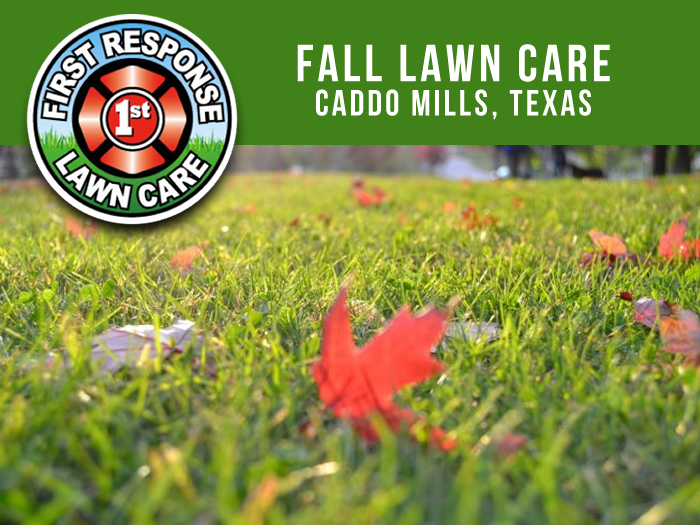Caddo Mills, Texas and the surrounding areas slip into fall almost unnoticed, until we realize the hot, humid days of summer are over. We rummage around for those puffy down jackets, even though we usually never need them in the fall.
Our warm-season grasses can be green into late fall but will go dormant once the temperatures stay below 60 degrees. The last snowstorm in Caddo Mills was on Dec. 25, 2012, but we can’t scoff at the possibility of “real” winter weather. According to the Farmer’s Almanac, winter will be milder and drier than normal, with below-normal snowfall in places that normally receive snow. The coldest periods will be in mid- to late November and early January and from late January into early February. The best chances for snow are in early December, early to mid-January, and mid-February. If we don’t want to be surprised by a brown lawn in the spring, we need to help the lawn have a good winter.
1. Water
Since snow is rare, we need to water the lawn all winter—one to two inches of water a week. Water slowly so that the moisture soaks into the soil and you don’t waste water with runoff. Also, watering in the morning allows your grass to dry before nighttime, lessening the chance of disease creeping in.
2. Remove leaves
Leaves covering the lawn keeps the much-needed sunlight from your grass. For a healthy lawn, gather the leaves and put them into your compost bin. You can also chop them up with a mulching mower so that they fertilize your grass naturally. Either way, you are saving money on plastic bags, but even more important, you are helping to save the environment by taking the manufacture and transportation of plastic bags out of the equation and by not adding to the problems caused by landfills.
3. Aerate
Aerating is one of the best ways to revitalize your lawn after it was trampled on all summer. A high volume of traffic compacts the soil, which, in turn, puts up a barrier between the grassroots and the water, oxygen, and nutrients that it needs to get through the winter. You can aerate with a pitchfork, a garden fork with tines or a gas-powered, walk-behind aerator to open up the soil, allow it to breathe and allow the grassroots to access the resources that they need.
4. Overseed
The fall, while the air is cool but the soil still warm, is the best time to overseed: sow additional grass seed over parts of the lawn where the grass is thin or where there are bare patches. Overseeding thickens the turf so that it can withstand the onslaught of diseases and weeds that attack during the fall and winter. Overseed after aerating and you’ll be shoring up your lawn’s foundation before winter comes.
5. Protect
The healthier your lawn, the less trouble you’ll have with disease. Brown patch often appears in the fall. You’ll recognize it by the patches of damaged turf that can be inches in width to several feet. The grass blades turn yellow at the edges of the patches and brown within the patches. For an eco-friendly solution, treat the patches with a baking soda spray. To prevent brown patches from developing, refrain from overwatering, make sure drainage is adequate, and be sparing with the application of nitrogen.
Lawn care needs a full-circle plan. If you take care of your lawn each season, it will green up in the spring healthy and lush without your having to break your back or your budget.
First Response Lawn Care offers full service lawn maintenance from mowing, fertilization, aeration and more. Have questions about lawn care? Call First Respone Lawn Care at 214-701-7622 for more information!

